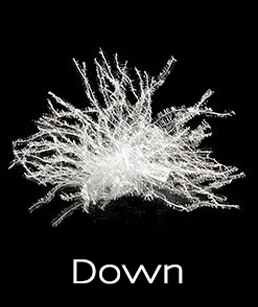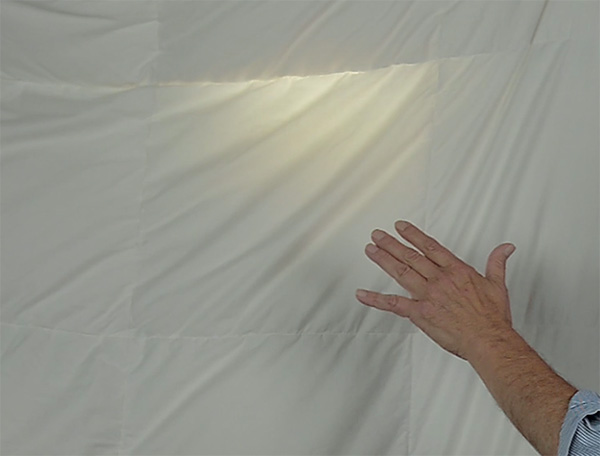Creating a cozy bed for the Winter and cooler months.
Updated 10/2023
As the cooler months approach, many who live in the northern climates will begin to assess their bedding. As winter approaches, it is time to pull off the coverlet or replace that summer weight-down comforter or blanket with a comforter that provides a little more warmth and coziness.
It is not uncommon for some to have two different bed looks and feels.
- A spring/summer bed that is light and airy and a fall/winter bed that is cozier and warmer in both look and feel.
We recommend that the fall/winter bed have a warmer and more comfortable look and feel using jewel-tone components and accessories.
- Warm colors such as dark oranges, browns, and greys will add a lovely ambiance to the room. These softer colors can also create a calming feel and look.
- Consider other accessories such as a soft, comfortable throw, decorative pillows, and a fluffy and toasty warm down comforter.
- This is also an excellent time to consider washing your down comforter and pillows as well, as this is also the perfect time to wash your duvet cover and mattress pad. Learn how to wash your down comforter HERE and how to wash pillows HERE.
Because Down Comforters and Sleeping Pillows do wear, it is a great time to inspect the condition of your them to see if they need to be replaced.
- Learn how to tell if it is time to replace your down comforter HERE.

With pillows, it is kind of the boiling frog scenario. People don’t notice the gradual wear that occurs over time.
- Pillows, over time, get flatter and flatter. They eventually reach a point in which they provide little, if any, neck and head support.
- Pillows can get nasty looking over time. As a side note, consider putting pillow protectors on them to keep them fresher looking.
- Down Comforters typically wear out in the area directly above your shoulders.
- A Down Comforter wears out in this area first because the Down in these compartments encounters more friction than on the edges of the comforter.

- As an individual tosses and turns in bed, their shoulders create tension and friction in these compartments. This friction causes the individual down clusters to abrade against each other, and over time, the down fibers break off into smaller dust particles and, find their way out of the comforter shell and end up on your nightstand.
- Over time, some compartments can be void of Down, leaving only two thin pieces of cotton fabric in the affected compartment.
- Once a comforter has reached this point in wear, there is little, if any, insulating value over the largest part of one's body – the chest and torso.
- Sleeping pillows encounter the same type of friction and wear caused by the weight of your head and from squishing up or adjusting the pillow during the night as one sleeps.
We think it is safe to say a down comforter and duvet cover arrangement is the preferred top of the bed cover for most people, especially in the colder months. So, this is an excellent time to inspect the condition of yours.
Determining if it is time to replace your comforter is quick and easy.
- Simply take the down comforter out of the duvet cover and hold it up to a room light or window, and you will immediately see if the compartments in the shoulder area are void of Down. If these compartments are empty, then the comforter is providing no insulation, resulting in cold spots.
- In the image below, there is still plenty of down, however if this compartment is only 50% full or less, consider replacing it.

If you find that your comforter needs to be replaced, the video found HERE explains what to look for in your next comforter.
This is also the perfect time to wash your duvet cover, and mattress pad.
Another benefit of getting a warmer comforter for colder months is one can turn down the temperature of the house/bedroom.
- Keep in mind that the optimal room temperature is somewhere between 65 and 72 degrees Fahrenheit.
- Many find that they sleep better in a cooler room, and with a cozy warm down comforter, one can turn down their thermostat. Not only will you sleep better, but you will save money on your heating bill.
Don't forget to add a pleasant fragrance to your bedroom. This is something that you might consider year-round. Adding a fragrance to your room will also add a subtle calmness that may result in a more relaxed feel. This can be accomplished by:
- Room candles
- A fragranced diffuser
- Potpourri
- Linen spray for your sheets
- Linen spray can also be used to remove wrinkles from your bedsheets. Learn how to accomplish this here.
What is the best type or style of Down Comforter?
- There are many different styles of Down Comforters.
- To understand more about the benefits and drawbacks of the different types of Down Comforters, view our article/video found here.
- A Baffle-Box comforter is a premium construction style. It does cost a little more than other types of comforters. However, it eliminates cold spots that can be found in other styles.
- When purchasing a Down Comforter, something to consider is the country where it is manufactured. Many comforters are produced in China.
- Not only does China allow ducks and geese to be live-plucked for their Down and Feather, but the cleanliness of the Down and Feather coming from China and other third world countries is frequently suspect.
How long will a Down Comforter last?
- Down Comforters do wear out.
- The life of a Down Comforter is influenced by a number of factors, including:
- The quality of the shell or outer covering impacts the life of a comforter.
- A restless sleeper will wear out a comforter faster than a still sleeper.
- If one lays on top of a Down Comforter, the life of it will be shorter.
- Typically a Down Comforter will last 8 to 15 years.
- Down Comforters wear out as a result of the friction that the Down clusters encounter from the person lying underneath create by tossing and turning, which is why restless sleepers will wear one out faster than still sleepers.
- To learn how to tell if your Down Comforter needs replacing, view our video/article found here.
What is the best way to clean a Down Comforter?
- While a Down Comforter can be dry-cleaned, we don’t recommend it.
- The chemicals used in dry-cleaning are not only harsh on the cotton shell and the down clusters but toxic.
- Because Down is a natural fiber, it absorbs the chemicals (PERC), which is identified by NOISH, as a potential carcinogen. Dry-cleaning a Down Comforter will likely leave this chemical residue on both the cotton shell and the Down clusters.
- Because the comforter is likely next to your mouth 8 hours a night, you may be breathing in the residue of PERC.
- We recommend laundering a Down Comforter with soap and water.
- To view our article/video on the best way to clean a Down Comforter, click here.
- Although this might be able to be accomplished at home, a laundromat or professional laundry service is a better alternative.
- The wash machines in a laundromat are larger, resulting in a cleaner Down Comforter.
- The driers are also larger in a Laundromat. The larger drum in these driers allows the comforter to tumble more freely, allowing it to dry more thoroughly.
- If the Down Comforter is not dried correctly, it could result in the item becoming mildewed.
What is the difference between Down and Feather?
- View our article/video on the differences between Down and Feather found here.
- Both Down and Feather are found on virtually all birds.
- There is significantly more Feather found on a bird then Down. Because it is more abundant than Down, it is lower in cost.
- Feather has a very defined quill as well as more structure and weight than Down.
- Down is found primarily in the breast area of a bird.
- Down is very unstructured in nature. This lack of structure allows the cluster to trap more air, which provides insulation for the bird as well as the garments that Down is used in.
- Down is much lighter than Feather.
- Down from waterfowl is used in coats, blankets, gloves, sleeping pillows, and of course, Down Comforter

